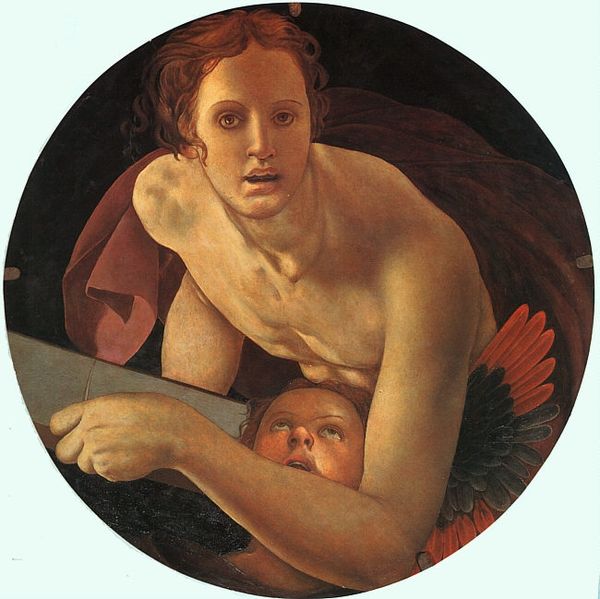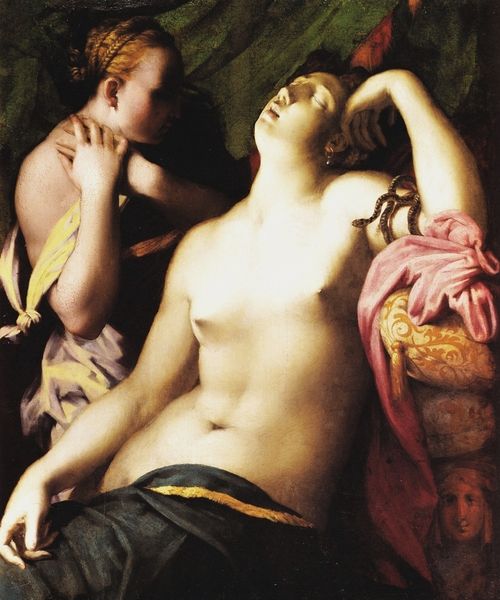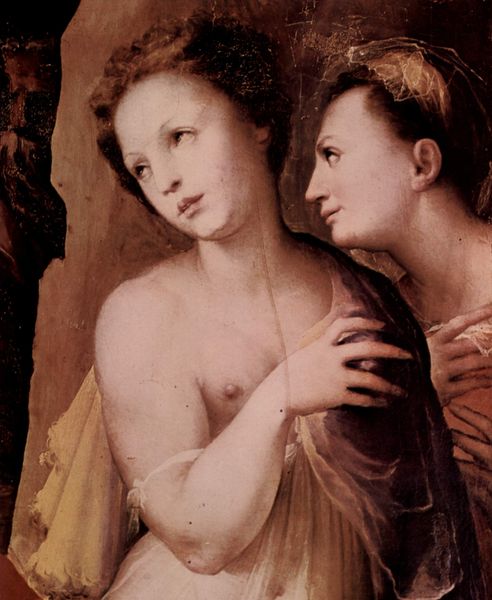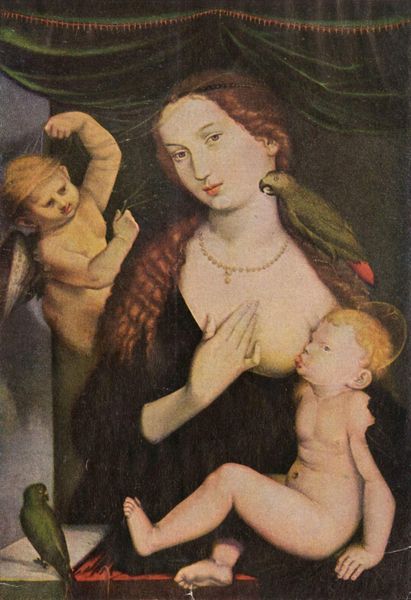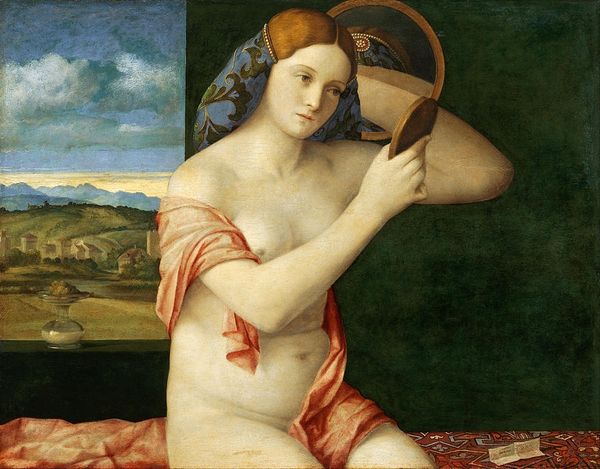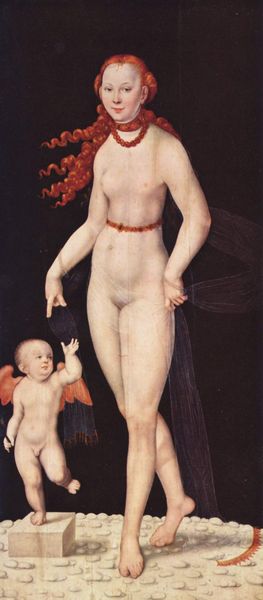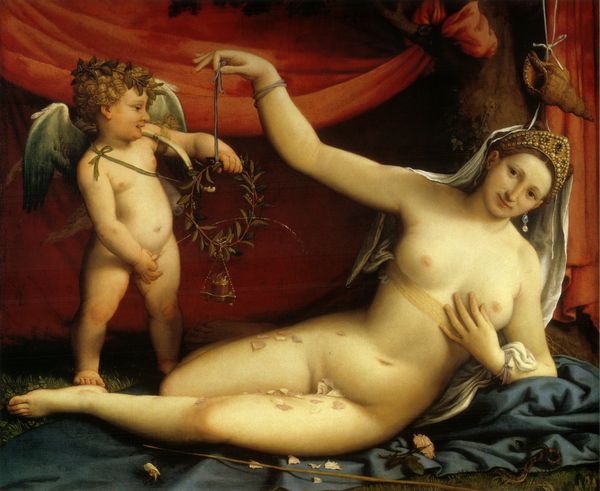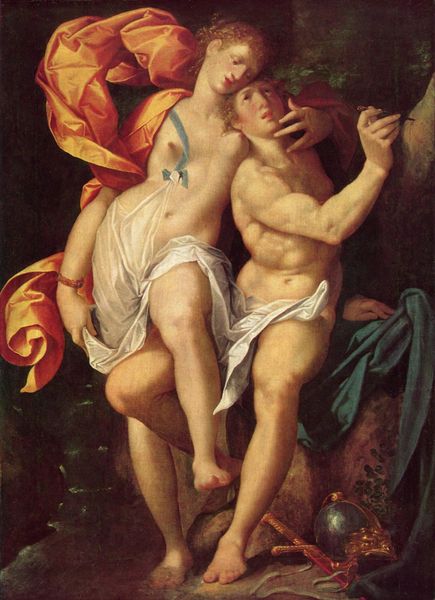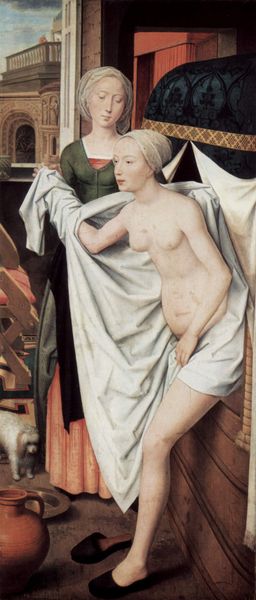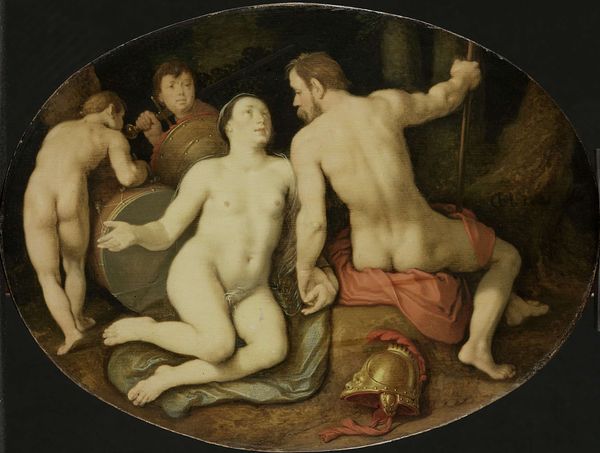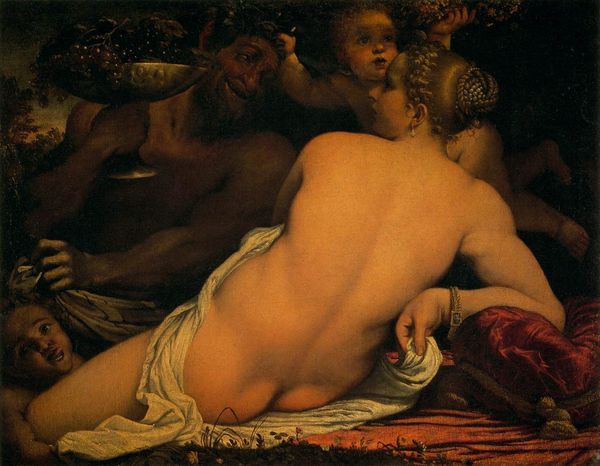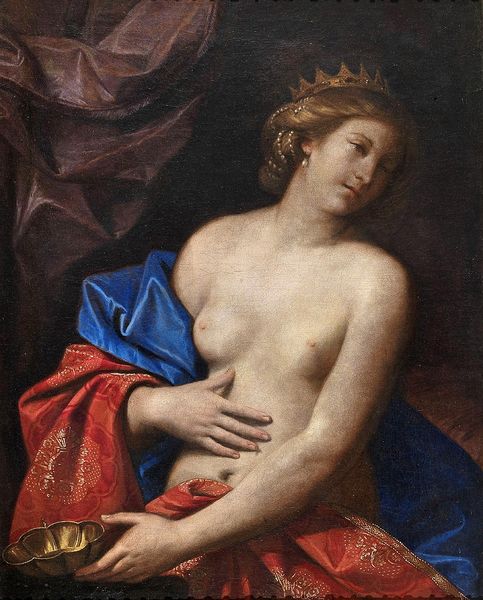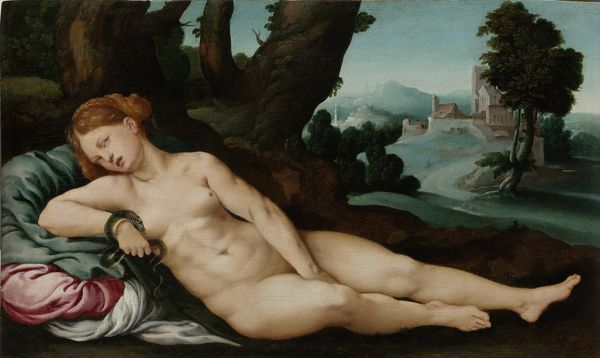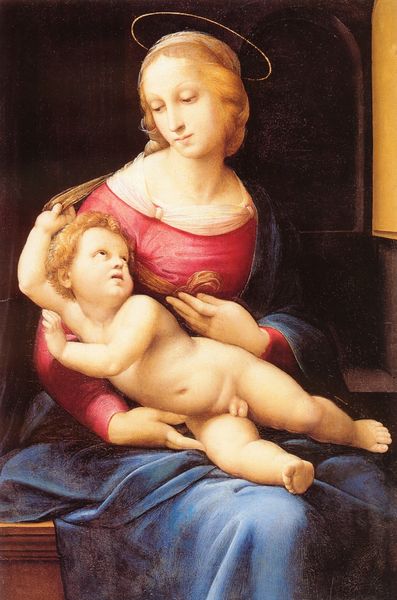
painting, oil-paint
#
portrait
#
high-renaissance
#
painting
#
oil-paint
#
figuration
#
oil painting
#
christianity
#
history-painting
#
italian-renaissance
#
portrait art
Copyright: Public domain
Agnolo Bronzino painted “St. Matthew” in sixteenth-century Italy, during the High Renaissance. Bronzino, who was the court painter to the Medici Dukes in Florence, was a master of the prevailing Mannerist style. He uses that style to depict the Evangelist Matthew, traditionally associated with the symbol of an angel, as he writes his gospel. Note that the angel doesn’t inspire Matthew from above. Rather, it is trapped beneath him, as if crushed by his divine inspiration. Does Bronzino mean to critique the traditional authority of the church? Is he showing how the artist must sacrifice other human beings in his search for inspiration? Or is it the institution of the court that he is critiquing? Historians of Renaissance art can use archival documents and other forms of historical evidence to illuminate Bronzino’s complex relationship to the social institutions of his day. The art is richer for it.
Comments
No comments
Be the first to comment and join the conversation on the ultimate creative platform.
